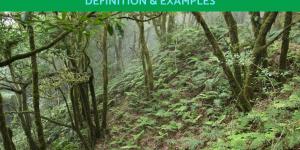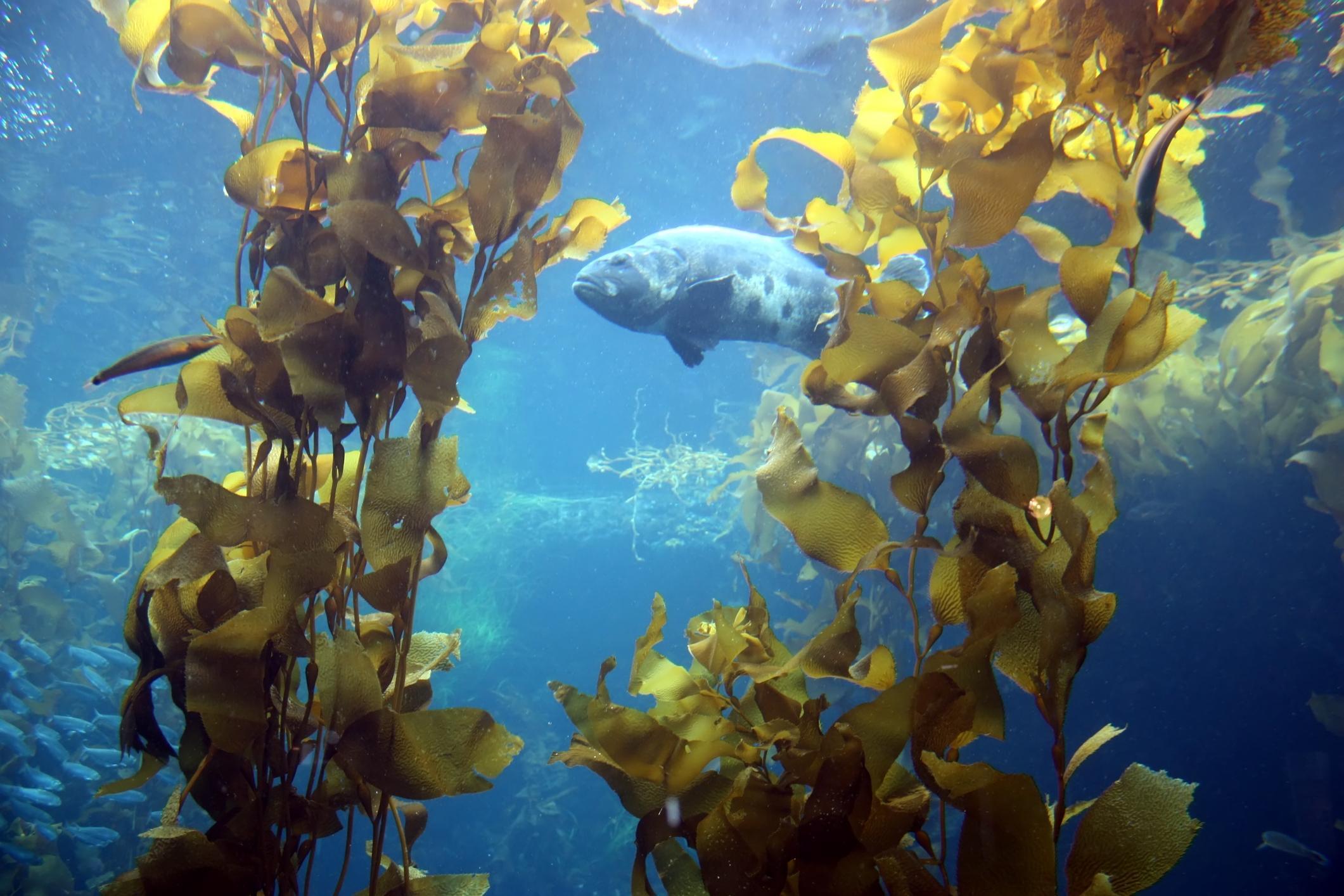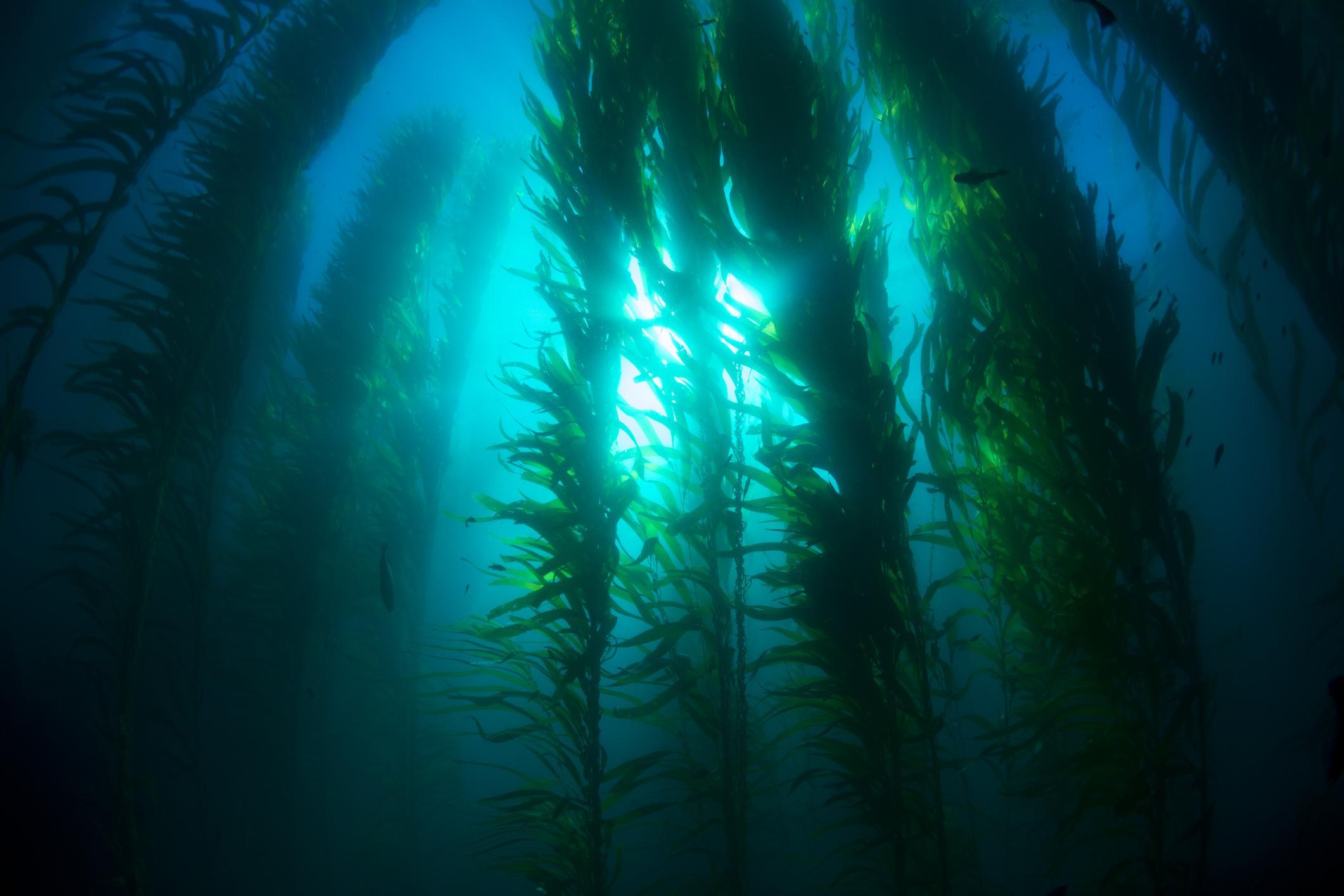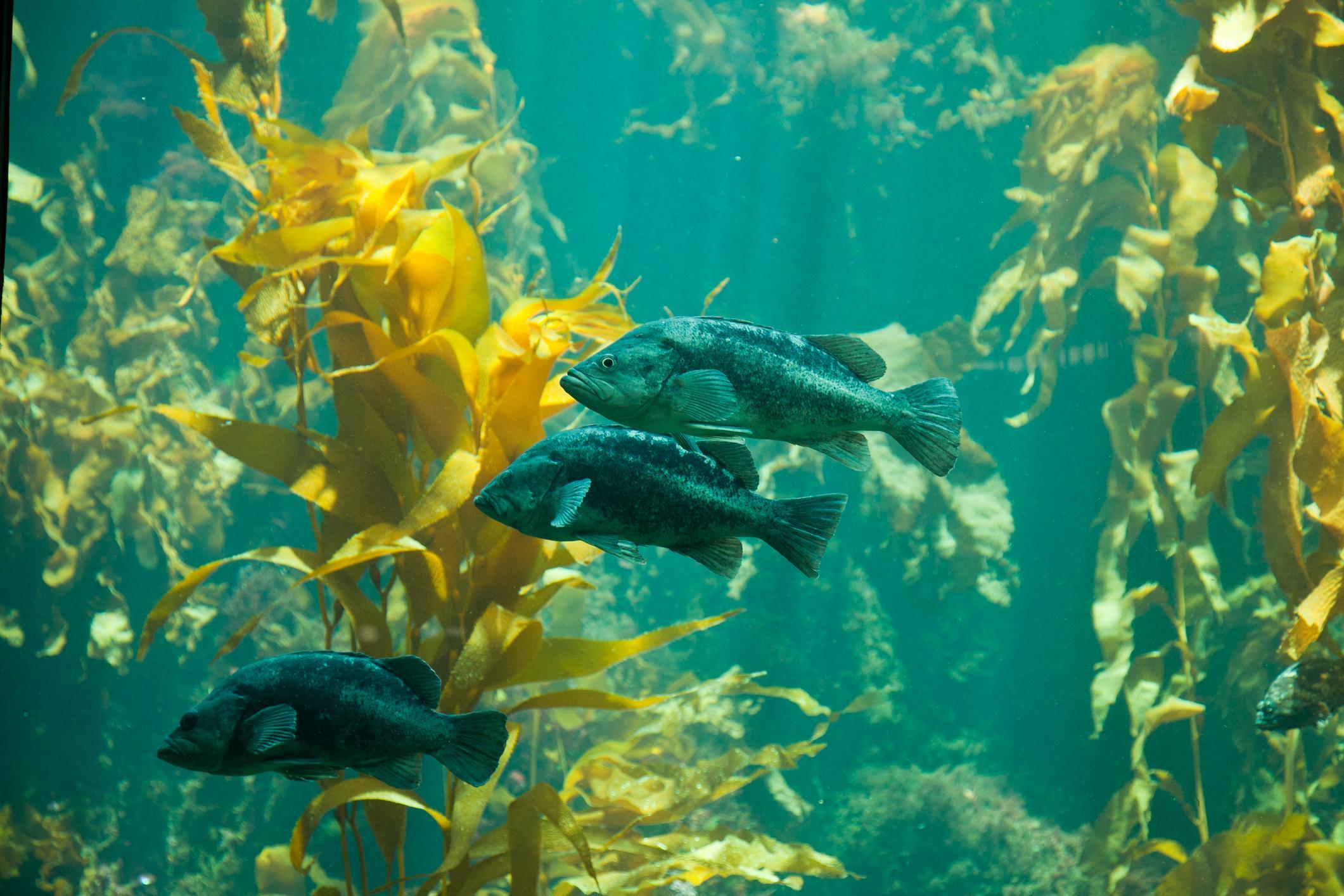Kelp Forest Plants and Animals


Located near coastal regions of various oceans, we can find the presence of underwater kelp forests. Although they can seem like magical spaces more closely associated with fairy tales than science, they are naturally occurring underwater forests. Unlike their terrestrial counterparts, underwater kelp forests are not made from trees. Terrestrial trees would not be able to survive in the high salinity of marine water. Not only are kelp forests aesthetically beautiful, but they play a very important role in their ecosystems.
At thedailyECO, we provide a kelp forest definition with examples. In doing so, we also look at the incredible range of biodiversity which use these ecosystems by looking at the plants and animals of kelp forests.
What are kelp forests?
Kelp forests are submarine collections of kelp. While they may be different in appearance to the algae we recognize from the top of lakes and other bodies of water, but kelp is actually a form of algae known as macroalgae, otherwise known as seaweed. There are different types of seaweed and kelp can be found in the order of brown seaweed known as Laminariales.
Seaweeds of this kind are found mainly in both temperate and polar regions. Various factors determine the distribution of kelp in kelp forests. These include temperature, nutrient concentration and the type of substrate from which they develop. The characteristics of kelp forests include the following:
- They form one of the most productive dynamic ecosystems.
- They provide a suitable habitat for aquatic communities, providing them with shelter, substrate and food.
- They harbor a great diversity of organisms, including bacteria, other species of algae, invertebrates and different groups of vertebrates, such as fish, birds, reptiles and mammals.
- They are considered to be more biodiverse than terrestrial forests.
- They require a high concentration of nutrients, temperatures below 20 °C and a substrate to which the macroalgae can adhere.
- The high productivity and biomass of these forests generate greater sedimentation of debris, decrease the intensity of solar radiation that reaches greater depths, modify marine currents and protect coastal regions.
- The macroalgae that make up the forests are considered habitat-formers. i.e. they are the primary modifier of a habitat cascade which will lead to the development of a given habitat.
- These algae can stay upright thanks to air-filled structures known as aerocysts, allowing them to get closer to the surface and obtain light radiation necessary for photosynthesis. Learn more about photosynthesis with our article on the different types of chlorophyll.
- They can grow up to 6" (15 cm) per day day if the light, temperature and nutrient conditions are optimal.
- Despite their relative vulnerability, they are resilient ecosystems against various disturbances since they are capable of rapid growth in damaged sections of kelp.
- They are the object of study for the understanding of various ecological processes.
Learn more about another type of algae with our article on what are red tides.

Where are kelp forests located?
Until only a few years ago, it was believed that kelp forests were delimited to latitudes between 40 and 60° in both hemispheres. New research has found that these forests can also be found in tropical waters close to the equator. These include macroalgal forests present in the Galapagos Islands. Although underwater kelp forests are most associated with temperate and polar coastal regions, they can be found in tropical regions.
Learn about how different habitats for plants and animals with our guide to the difference between biomes and ecosystems.
Flora and fauna of kelp forests
As we have stated above, underwater kelp forests are home to an incredible amount of biodiversity. Since these are aquatic ecosystems of the sea, this means they are in the form of marine life. The types of plants and animals found in kelp forests include the following:
Algae
Since the definition of a kelp forest requires there to be the presence of kelp, we can find various types of algae in the order Laminariales. The most representative forms of these macroalgae are the following species:
- Giant kelp (Macrocystis pyrifera): an inhabitant of the Pacific Ocean coasts of North and South America, it is considered the largest algae in the world since it can reach more than 45 meters in length.
- Strapweed (Lessonia corrugata): inhabitant of the coasts of Tasmania, its genus is one of the main genera that create kelp forests.
- Elk kelp (Pelagophycus porra): grows in waters with temperatures below 16 degrees on the coasts of North and Central America.
- Feather boa kelp (Egregia menziesii): lives on the west coast of North America in the intertidal zone and can measure over 16 feet in length.
- Southern sea palm (Eisenia arborea): an edible algae that is distributed on the western coast of the Pacific Ocean in countries like the United States, Mexico and Japan.
Kelp and other types of algae are members of a group of organisms known as protists. Learn more about how algae fit into this classification with our article on the Protista animal kingdom.
Invertebrates
Kelp forests have a great diversity of invertebrate species. These include the following:
- Barnacles
- Sea squirts
- Sea snails
- Crustaceans (such as lobsters and amphipods)
- Sea urchins
- Sea cucumbers
Fish
Kelp forests are home to a large number of fish species, including many of commercial interest. For example:
- Ocean whitefish (Caulolatilus princeps)
- Rockfish (Sebastes spp.)
- White seabass (Atractoscion nobilis)
- California sheephead (Semicossyphus pulcher)
- Rock basses (Paralabrax spp.)
- Giant seabass (Stereolepis gigas)
Learn more about the habitats of marine environments with our article on what is an aquatic ecosystem?
Birds
Although they do not live under the water in a kelp forest, certain species of bird often use kelp as a food source. For this reason, we can often observe them flying over and diving into kelp forests to feed. Among these different bird species we can find:
- Seagulls
- Terns
- Cormorants
- Oystercatchers
- Ospreys
Although not many live near kelp forests, you can learn more about different avian species with our guide to the biggest birds in the world.
Mammals
Many marine mammals are sighted near these kelp forests. Since many smaller prey animals use these kelp forests to feed, larger mammals often enter them as an easy source of their own food:
- Sea lions
- Seals
- Whales
- Sea otters
You can find out more about one of the most fascinating marine mammals that exist with our article on whether dolphins are getting high.
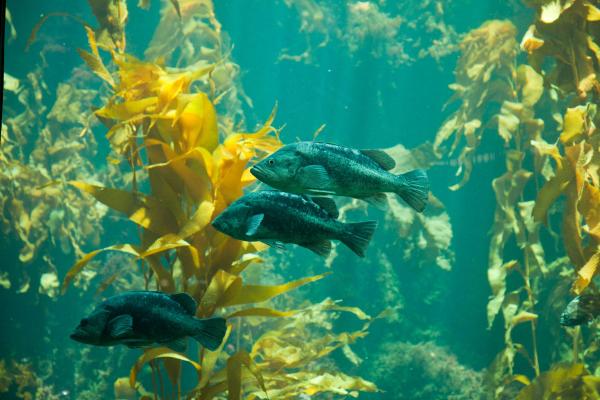
Importance of kelp forests
Currently, macroalgae forests are under threat, mainly due to the degradation and loss of habitat caused by pollution and exploitation of their populations. Changes in the environment related to global climate change are also important factors in the environmental degradation of these areas.
The conservation of these ecosystems is fundamental. They are of great importance to various ecosystems, including the following:
- They perform extremely important functions such as oxygen production, nutrient recycling, sediment stabilization and regulation of the flow of marine currents.
- The macroalgae that make it up are primary producers of coastal marine communities and are the basis of the complex trophic webs on which higher level organisms depend.
- Their conservation ensures the operation, maintenance and protection of the flora and fauna they house.
- They provide societies with a wide variety of ecosystem services for their different applications.
- They contribute to the fixation of carbon dioxide.
Learn more about how we can help kelp forests and other biomes survive with our guide to protecting nature's ecosystems.

If you want to read similar articles to Kelp Forest Plants and Animals, we recommend you visit our Ecosystems category.
- Velasco, AH, Luna, RB, Derbez, JV, Domínguez-Guerrero, I., De La Mora, MP, & Gómez, AG Submerged forests of Mexico. Available at: https://villasenor-derbez.com/files/publications/bosques_sumergidos.pdf
- Peteiro, C., Cortés, B., Arroyo, NL, García-Tasende, AVY, & Martínez, B. Large marine algae. Available at: https://core.ac.uk/download/pdf/71781179.pdf
- Uribe Alzamora, R. (2015). Succession patterns during the early stages of development of a macroalgae (Lessonia trabeculata) forest system and a bleached bottom in the subtidal north of Chile. Available in: https://biblioimarpe.imarpe.gob.pe/bitstream/20.500.12958/3161/1/UribeR.TesisDoctoral2015.pdf



